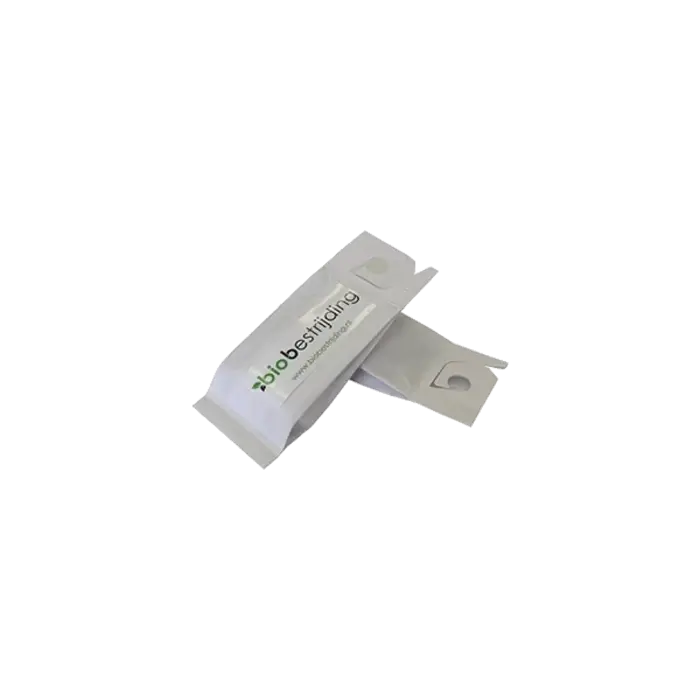BioBestrijding | Parasitic Wasp Against Aphid Preventive
BioBestrijding Control Parasitic wasp against aphids Preventive
Attention! This product consists of live animals and is only available for order in the Netherlands or Belgium. If you order more than just Bio Fight, there will be an additional charge of € 7.95 due to dropshipping from the supplier.
Parasitic wasps are parasites and natural enemies of various species of aphids. Because there are many different parasitic wasps that all work against a different type of aphid we supply 5 handy hanging bags containing a mix of various parasitic wasps to ensure a complete control. The 5 hanging bags contain 500 larvae of the parasitic wasps.
What is a parasitic wasp?
Parasitic wasps are the natural enemies of the aphid. Due to their excellence, solitary aphids are also found and not only the aphid hot spots are tackled. Aphids are found by parasitic wasps even before the aphids are detectable. Each type of parasitic wasp prefers a certain type of aphid, that is why we have created a mix of the most effective parasitic wasps. With this mix of parasitic wasps we control basically all known aphid species. The mix consists of the following parasitic wasps:
- Aphidius ervi parasitic wasp: control of aphids
- Aphidius matricariae parasitic wasp: control of red aphid, green peach aphid, potato aphid and buttercup aphid. Side effect on cotton aphid.
- Lysiphlebus testaceipes parasitic wasp: control of peach aphid, tobacco peach aphid and peach potato aphid. Also side effect against buttercup aphid.
The adult parasitic wasps feed on honeydew and flower nectar and lay their eggs in aphids (parasitization). The eggs laid in the aphids develop into larvae of the parasitic wasp. The aphids then die and mummify, they discolor and are easily recognized by their bloated form. The adult parasitic wasp exits the aphid mummy through a hole in the back of the body. After about 10 to 14 days, the first mummies will be visible in the crop.
How many parasitic wasps are needed to control aphids?
We recommend 1-2 parasitic wasps per m2. We deliver the parasitic wasps as follows:
They are delivered in 5 bags (5 x 100 pieces) which you can hang up in your crops. The package of 500 pieces is sufficient for approximately 250 m2.
Temperature and humidity
The optimum humidity is between 50-70%. The temperature should be at least 18 degrees. The optimal temperature is 25 degrees. The different parasitic wasps can also be ordered separately, please contact us for more information. Remember that adult parasitic wasps are especially effective in closed spaces and greenhouses, after all, parasitic wasps fly everywhere. In addition, parasitic wasps also have natural enemies such as spiders and birds.
Release instructions
- Introduce parasitic wasps preventively or as soon as possible after the first appearance of aphids.
- After receipt of the parasitic wasps, they should be released as soon as possible.
- Open the bags at the edge and hang them in the plants. Make sure that the parasitic wasps can fly out freely.
- Hang the bags well spread out.
- Hang the sachets in a shady place and make sure that no direct water can run into the sachets.
- Repetition of the application after 2-3 weeks is advised.
Combination of lacewings and parasitic wasps
For optimal control of aphids we recommend to introduce parasitic wasps together with Chrysoperla carnea lacewing. The Chrysoperla lacewing works especially well as a corrective control of aphids and the parasitic wasps are mainly a preventive solution. These 2 predators combined provide total control of aphids.
Storage advice
Biological beneficials are living animals and have a (very) short life span and should therefore be introduced into the crop as soon as possible after receipt. Storage can negatively influence the quality and is only possible under the conditions mentioned below.
- Storage life: 1-2 days
- Storage temperature: 8-10C
- Store in the dark and flat



